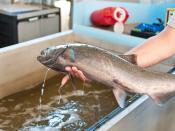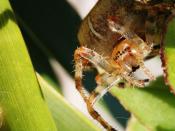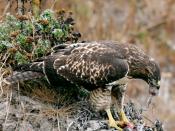Introduction
The purpose of Pennuto's (2003) experiment is to show seasonal changes in insect and predator behavior. Pennuto (2003) determines whether seasons, predator existence or alternative prey, availability affected prey patch use when faced with a sit-and-wait predator from streams in southern Maine. In addition to the abrupt morality rate of predator, movement is assessed as a possible mechanisms, explaining patch use by prey in different seasons. What Pennuto (2003) is trying to prove is; can seasons control the outcome of predator and prey? In this study, Pennuto (2003) uses two stream-dwelling organisms, a mayfly and caddisfly, changed their substrate, and studied fishfly predators eating pattern. He also, studied the movement of predators with and without prey in winter and summer, as a possible method to explain prey patch use patterns. There has also been similar research done on this topic by, Tsuneo Tanaka and Akira Taniguchi, at the Laboratory of Biological Oceanography, Faculty of Agriculture, Tohoku University, Sendai Japan in 1999.
Methods
For this experiment you would need the following: live organism from a river, such as fly eating predators, and substrates from the river. Ephemerella invaria, Hydropsyche venularis, Symphitopsyche walkeri, and Symphitopsyche sparna as prey. An experimental stream made with a temperature controlled reservoir, two centrifugal pumps, frigid-unit water chiller, and a mesh screen. Each predator need to be held in individual laboratory tanks and starved for three days. You would need to conduct two types of trials to investigate the effects of season on predator movement behaviors: 1) long term starved predators trails and 2) prey substrate-use trails. A prey substrate used with and without predators also needs to be tested. Trails needs to be initiated by introducing half of the prey into the upstream end of a channel after the flow is restricted and gradually restored.


